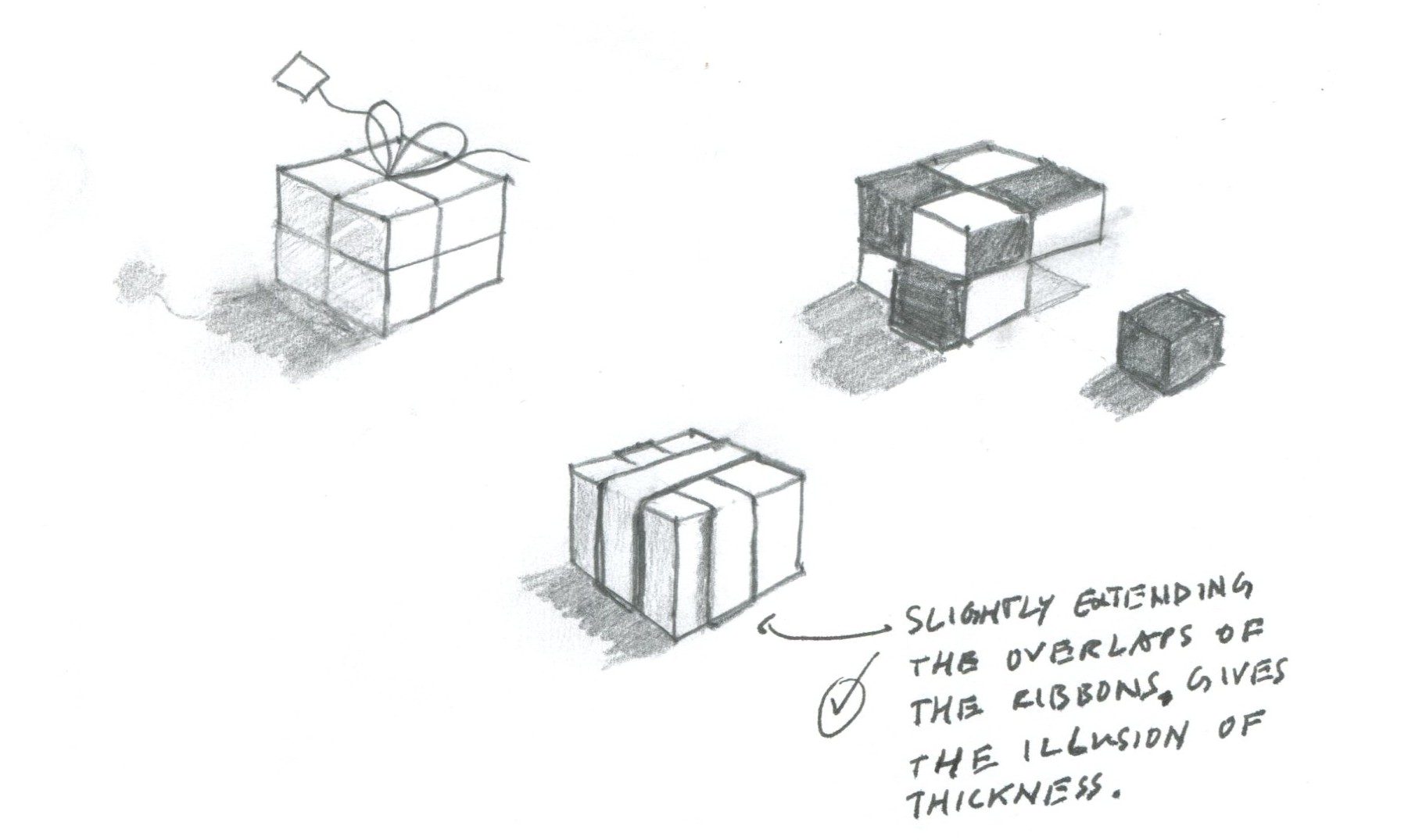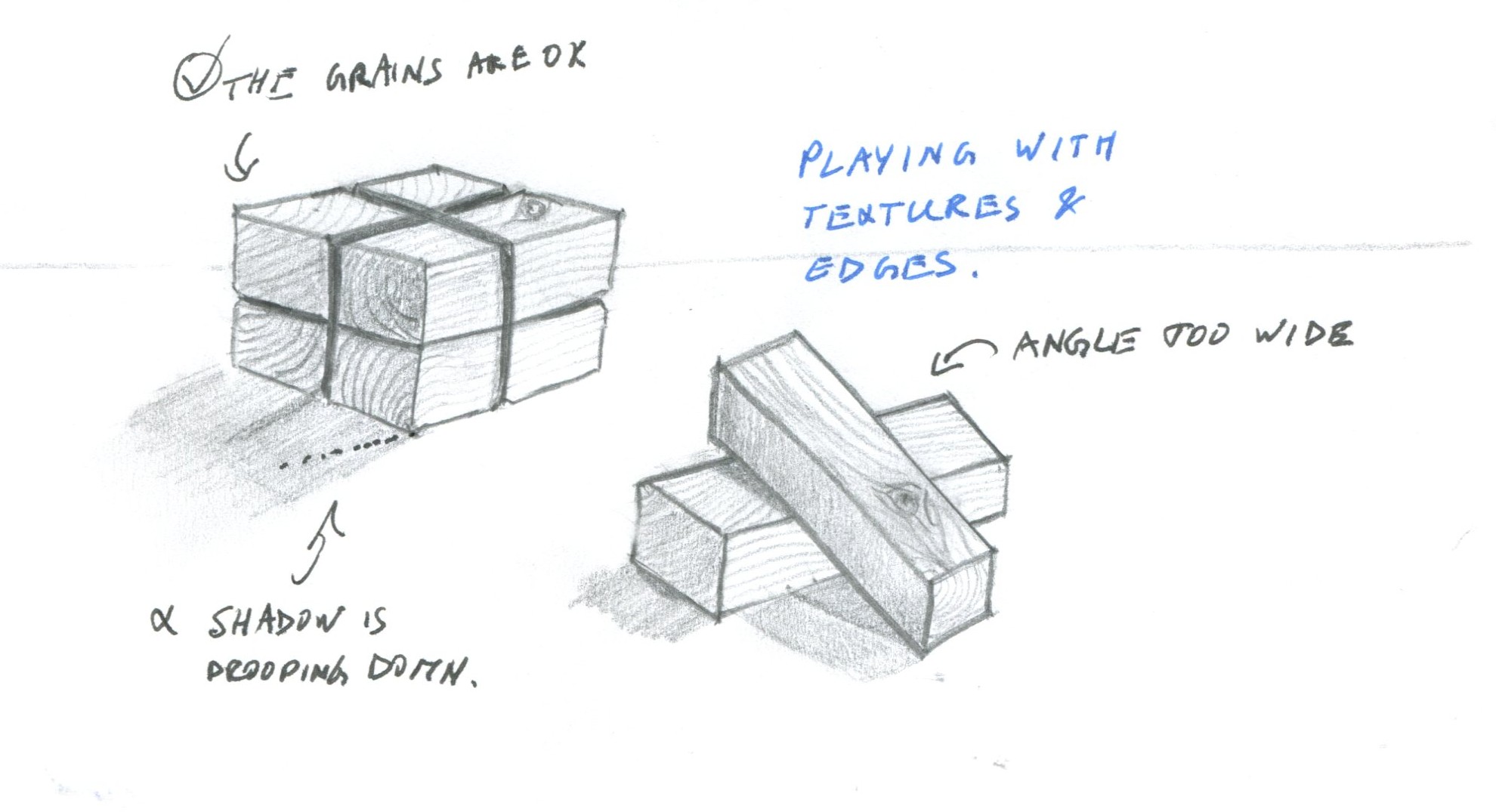Nothing says 3D, like a nice cube. Perhaps, the most recognizable 3D object. I’ll be honest, the cube was something I knew how to draw a long time ago. But what I learned in this chapter was how to make sure the corners are straight lines by connecting 7 dots.
The Amazing Cube
Cubes are super versatile. You can build anything with cubes. At the end of this chapter, I tried to create a bundle of woods. This was the first time I tried to add texture to an object. I was pretty happy with the results. Regardless, that didn’t stop me from my usual self-critic to make notes when I was done. Which brings up a good topic that I won’t get into—making notes of your design decisions.
Making notes on any type of design work is a GOOD thing. Most of the time our decisions in the creative process travel from our brains directly to the screen. There’s nothing that ‘logs’ the reasoning behind our decisions. More importantly, we don’t make notes of what didn’t work while we are exploring ideas. I find these notes valuable when the time comes to reveal your design to your client or when you have to explain why a certain change request won’t work.








 From creating WordPress themes to server architecture; I bring over 20 years of experience in Web/application development to my clients. Like the Web, my skill-set is constantly changing to adapt to new technologies and methodologies in delivering results. I'm a firm believer in using well-established standards to ensure longevity and flexibility for all my projects.
From creating WordPress themes to server architecture; I bring over 20 years of experience in Web/application development to my clients. Like the Web, my skill-set is constantly changing to adapt to new technologies and methodologies in delivering results. I'm a firm believer in using well-established standards to ensure longevity and flexibility for all my projects. 
